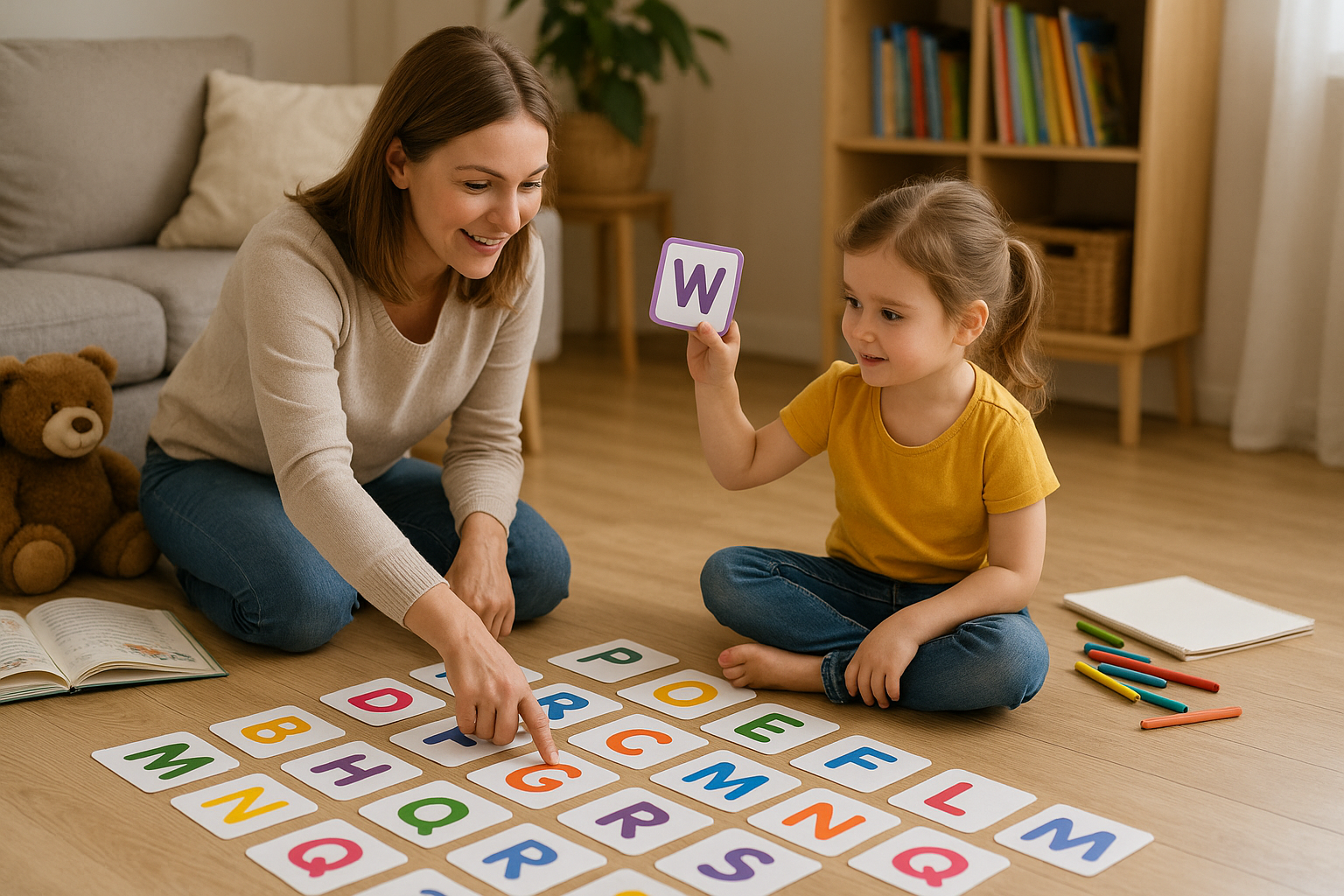Fostering literacy in early childhood is a powerful step toward lifelong learning. But how do you teach reading and writing to little ones in a way that’s engaging and effective? The secret is: playfulness. Children learn best when they’re having fun, feeling safe, and exploring naturally. This article will guide parents and caregivers on how to teach literacy at home through enjoyable, play-based strategies.
Why Playful Literacy Works
Young children aren’t designed to sit still and memorize letters. They are natural explorers, learning through their senses, curiosity, and interaction. Playful learning taps into:
- Emotional connection
- Repetition without boredom
- Hands-on experiences
- Language-rich interactions
All of these create a strong foundation for literacy in a stress-free environment.
Create a Print-Rich Environment
Your home can become a mini-library and a visual playground. Here’s how:
- Label objects around the house: chair, door, fridge, toys.
- Make signs for routines: “Wash hands”, “Snack time”.
- Create a letter wall: hang cardboard letters or use foam stickers.
- Have books everywhere: in the bedroom, bathroom, living room, and kitchen.
When kids are surrounded by words, they begin to recognize them and understand their importance.
Make Alphabet Games Part of Daily Life
There’s no need to sit down for alphabet drills. Instead, try these:
- Alphabet scavenger hunt: “Find something that starts with B.”
- Letter matching with magnets on the fridge.
- DIY alphabet cards with their favorite characters or animals.
- Songs and rhymes: like the alphabet song, or phonics-based tunes.
Storytelling Is Powerful
You don’t have to be a professional narrator. Children love hearing stories, especially personal ones. Here’s what to do:
- Read aloud every day—even just for 10 minutes.
- Use different voices and sound effects for characters.
- Encourage retelling: Ask them, “What happened in the story?”
- Make up stories together: “Once upon a time, you and your stuffed animal went to the moon…”
This builds comprehension, vocabulary, and narrative skills.
Use Everyday Moments for Literacy
Teaching literacy doesn’t mean you need special materials. Look for moments like:
- Cooking: Read the recipe, measure ingredients, name utensils.
- Shopping: Read food labels, store signs, or shopping lists.
- Driving: Point out traffic signs or license plates.
- Playing: Write signs for their pretend store, doctor’s office, or restaurant.
Create a Reading Routine
Consistency helps kids feel secure and builds habits. Try this:
- Set a reading time each day, like after breakfast or before bed.
- Let the child choose the book sometimes.
- Read books that include rhymes, repetition, and rhythm—these help with phonemic awareness.
- Ask open-ended questions during and after reading: “What do you think will happen next?”
Engage the Senses
Make literacy a full-body experience:
- Touch: Use sand, salt trays, or shaving cream for letter tracing.
- Sight: Use colorful flashcards and picture books.
- Hearing: Play rhyming games, sing, or use audiobooks.
- Movement: Form letters with your body, jump on floor letters, or dance to the ABC song.
Use Technology Wisely
If you use apps or videos, choose ones that:
- Are age-appropriate and interactive
- Include phonics and storytelling
- Limit passive screen time; watch together and talk about what they saw
Some great literacy apps include Starfall ABCs, Endless Alphabet, and Khan Academy Kids.
Create Simple Writing Opportunities
Writing is part of literacy and can start early:
- Let them draw and scribble freely.
- Provide different writing tools: markers, chalk, crayons.
- Write shopping lists, birthday cards, or letters together.
- Display their writing with pride—this encourages more effort and creativity.
Follow the Child’s Pace
Each child learns differently. Avoid comparing or pushing too hard. Instead:
- Celebrate small successes
- Repeat activities they love
- Observe what engages them most
- Keep learning joyful, not pressured
The goal is to nurture a love of reading and writing that lasts for life.
Real-Life Success Example
Sofia, a mom of two in Florida, used a playful approach when her 4-year-old son struggled with recognizing letters. Instead of buying expensive workbooks, she created a “letter treasure hunt” every morning using sticky notes around the house. In two weeks, he not only recognized all letters but began forming small words. It worked because he was having fun.
Final Thoughts: Play is Powerful
Teaching literacy at home doesn’t require a teaching degree or expensive materials. What it needs is patience, creativity, and playfulness. Every silly rhyme, pretend letter shop, or messy alphabet painting is a step toward language mastery. When literacy is fun, children don’t just learn it—they love it.
